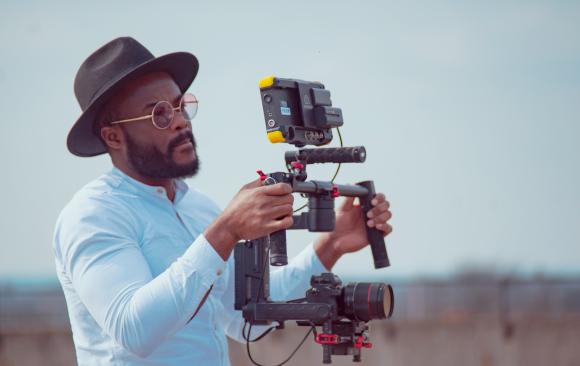Using a gimbal is an excellent way to stabilize your camera and soften unwanted shaky movements, producing smooth and stylized shots. Unlike the steadicams and dollys that have been used for many years in film and television production, a gimbal uses intelligent sensors and motors to keep your camera stable. Gimbals don't require the same level of skill and experience to operate them as those traditional methods, making them a much more accessible method of stabilization. Still, there are some important considerations to keep in mind.
Consider these five these tips before using a gimbal:
- Practice makes perfect. There may be a learning curve as you begin to balance your gimbal correctly and familiarize yourself with all its features, including bluetooth controls and capabilities. Start slow, and get used to how it mounts and how it moves. You'll want enough practice to not only feel comfortable using it but also to practice any specific gimbal shots that you plan to film during your video shoot. Don't get discouraged; but do set aside time in advance of any planned shoots.
- Allow enough time for setup: Depending on what type of camera you are using, you may spend a significant amount of time setting up and balancing your gimbal before using it. Balancing a gimbal ensures that you will be able to achieve smooth shots, but the process can take some time. It is important to note that most larger gimbals don’t come out of the box pre-assembled. Smaller gimbals for your smartphone will not require as intensive setup; however, if you are using one to steady your mirrorless camera, DSLR, or larger camera, you will need to familiarize yourself with various gimbal parts and the assembly process.
- Familiarize and plan: One of the great parts of using a gimbal is the flexibility it allows for capturing a variety of shots and movements. For example, camera operators may choose to push-in while tilting up or down, track, or slowly reveal a subject from behind an obstruction. Familiarizing yourself with these techniques and visual languages can take time (and have we mentioned... practice!) Study gimbal shots that are used in your favorite work and create a gimbal shot list and a clear filming plan before arriving on set. Remember, orchestrating a complex gimbal shot may require complicated blocking and affect your lighting setup. The more you can plan ahead of time, the better.
- Be conscious of fatigue: Utilizing a gimbal may add some significant weight to your camera setup if you are moving beyond a lightweight smartphone video shoot. Be conscious of how heavy the combination of a gimbal and camera will be as you plan out your shooting day and account for potential physical fatigue as the day progresses.
- Don't forget about your other equipment and techniques. When using your new gimbal, it is easy to fall in love with the smooth images that it helps produce. It's important, though, to remember that choosing equipment and shots that best serve your story is paramount. Gimbals are great for certain scenes, but handheld, dolly, tripod, and jib shots, to name a few, can also contribute a lot of depth to the story that you are telling.
For more information, tips and tricks visit www.mnn.org/learn for free workshops, professional courses, filmmaking bootcamps, and more resources to make your productions successful.
Want more? Click here for our in-person classes!


